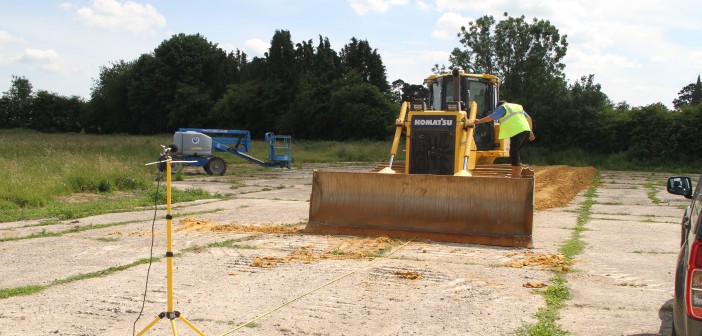Malcolm Kent Technical Consultant to the Construction Equipment Association gives an overview of some of the issues currently being discussed on the European construction equipment scene.
NOISE: new and tougher limits on the way
Having considered merging the Noise of Outdoor Equipment Directive with the Machinery Directive, the European Commission eventually decided to keep them separate. As such, on 1st April they launched a study on the scope and limit values of the existing Outdoor Noise Directive (2000/14/EC). The Commission selected a consortium called ‘Odelia’ (Outdoor Equipment Noise Limit Assessment), under the leadership of TNO, the Dutch Organisation that was involved in a similar capacity with the NOMEVAL study of 2007.
The CEA contributed to the CECE comments submitted to TNO, reiterating the necessity to consider the legislative environment affecting machinery manufacturers, especially the NRMM (exhaust emissions) and Machinery Directives.
At the end of June, ODELIA issued its first intermediate report and suggested preliminary proposals, which are mainly based on the NOMEVAL report (2007), and new findings. In short, revised noise limits are proposed for about half of current Article 12 equipment (having to meet limits) and several categories, which currently just need to be labelled with the sound power, are proposed to have a noise limit. Affected machine categories include, amongst others, some compaction machines (plates, rammers, rollers), drill rigs, hydraulic hammers, road milling machines, truck mixers, mobile sieve installations and mobile breakers.
Industry will continue to provide input to the Commission, including as a stakeholder at Steering group meetings before the final draft ODELIA report which will be submitted during October 2015, with publication expected in early 2016. The study conclusions will be used as input for the impact assessment to be launched in 2016 or 2017 and the Commission expects to table its proposal in 2018, with the new legislation being applicable as from 2020/2021.
MACHINERY DIRECTIVE: revision anticipated
The European Commission is considering a revision of the Machinery Directive to start during 2015. A study is expected to be launched in September and will last for 18 months, with a legislative proposal on the revised Machinery Directive expected in 2020.
Other ongoing studies include the European Commission’s Joint Research Centre (JRC) Institute for Energy and Transport which is carrying out a study on behalf of the DG GROW (Internal Market, Industry, Entrepreneurship and SME’s). This is to assess the impacts of a possible extension of the scope of the Machinery, the Pressure Equipment and ATEX Directives, regarding equipment intended for use in the offshore oil and gas industry. The Commission is now gathering stakeholders’ input via an online ‘Survey on Offshore Oil and gas Equipment 2015 – Cost of compliance with EU Product Safety Legislation”. This consultation will run until 19 September 2015 with the results of the study to be published in early 2016.
ROAD REGULATION HARMONISATION: study expected
The final terms of reference have been submitted to interested stakeholders and member states for the study on the harmonisation of road circulation requirements for mobile machinery. The consultant, Ecorys, aims at completing the study by the end of 2016. A stakeholder meeting took place on 24 June, with a view to sharing knowledge from researchers, industry and the European Commission to discuss preliminary findings, the planned approach for data collection as well as the quantification of non-harmonised requirements. CECE has co-signed the industry position together with CEMA (ag tractors), FEM (materials handling) and EGMF (garden machinery).
REVISION OF EXHAUST EMISSIONS DIRECTIVE FOR NRMM: slow progress
Of greatest interest to equipment owners will be whether we manage to get a provision for replacement engines introduced, as this was not included in the Commission proposal. Amended proposals from European Parliament committees, member states and stakeholders on the replacement engines’ provision range from a time limitation of 7 years, to 10, 15, 25 and even no time limit as suggested by two MEPs, which replicates the current situation under the directive 97/68/EC. We continue to press for the industry position and wait for the result, exhausted!



